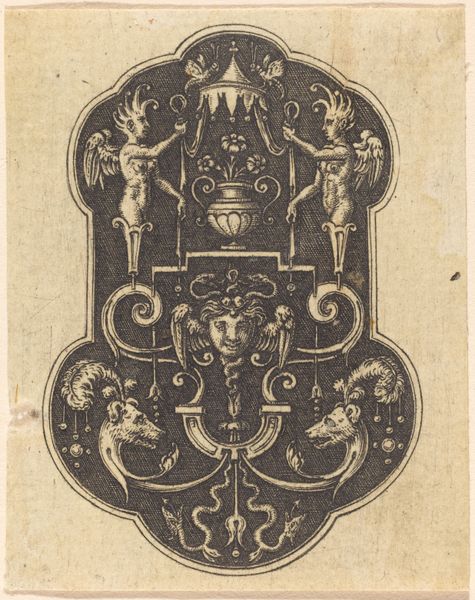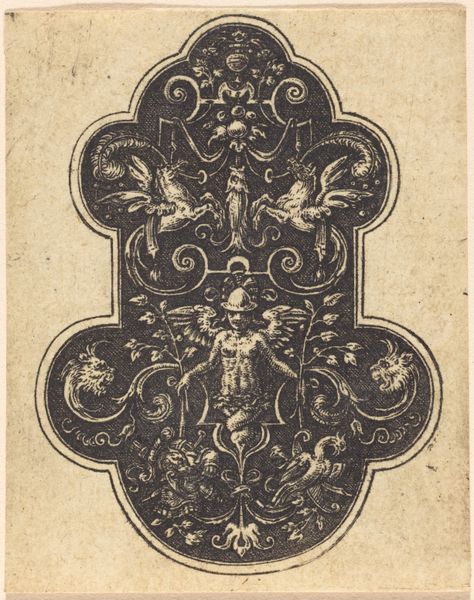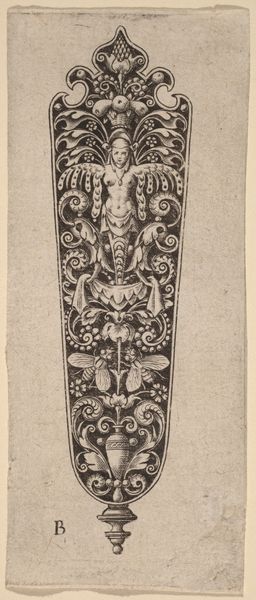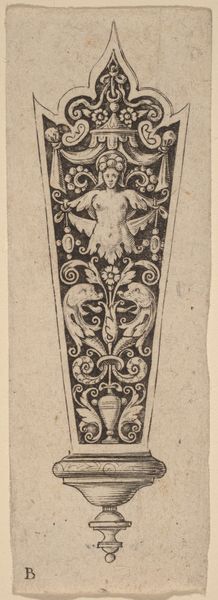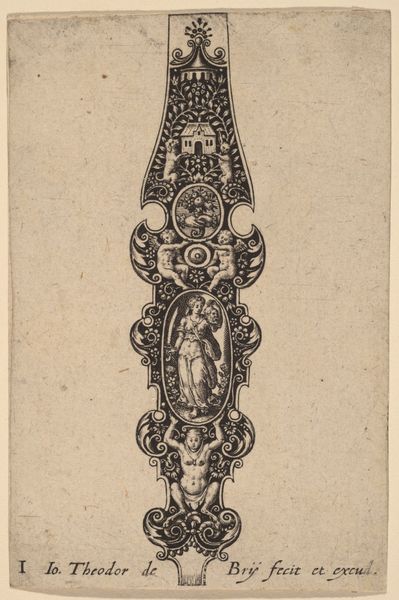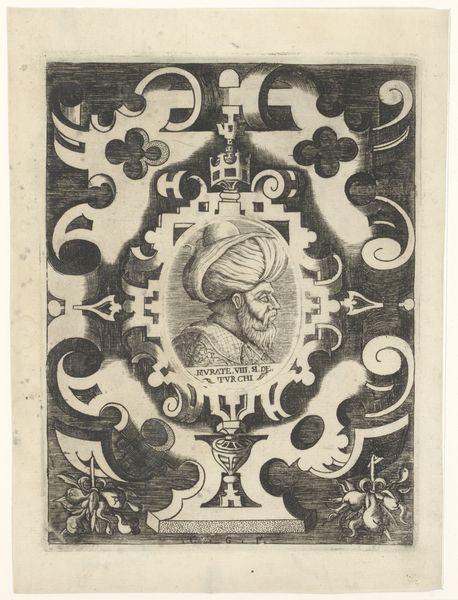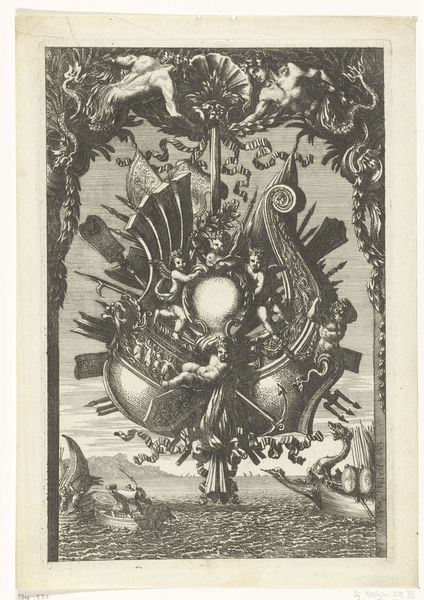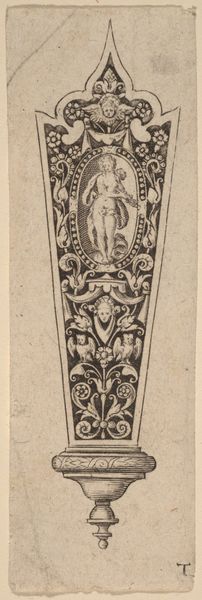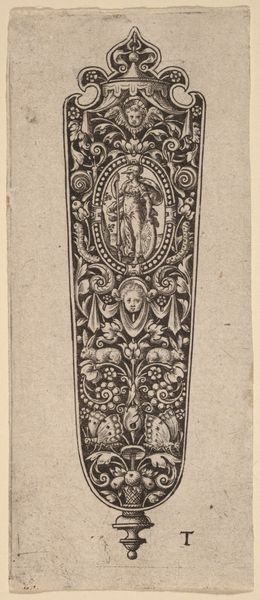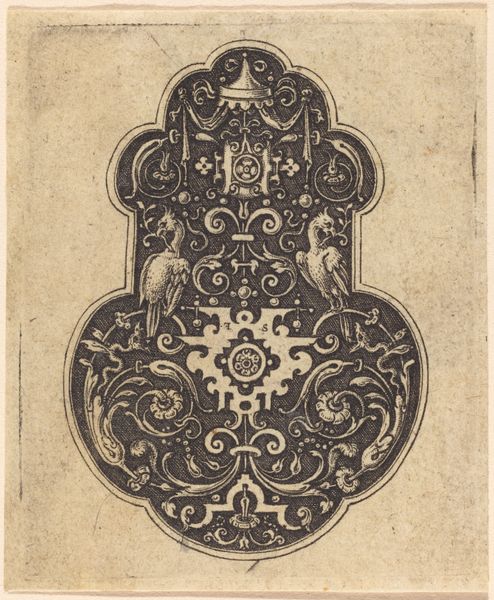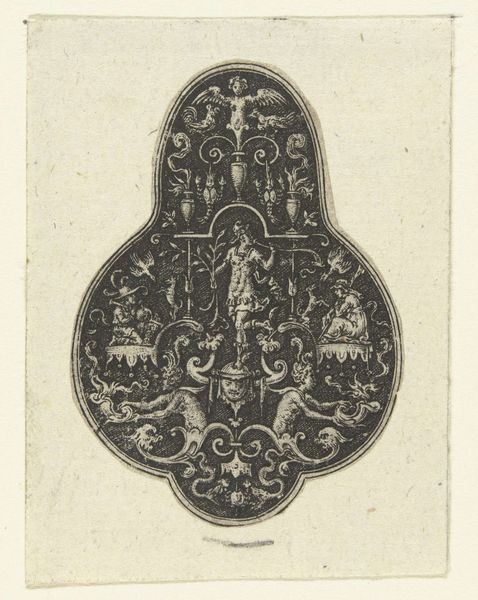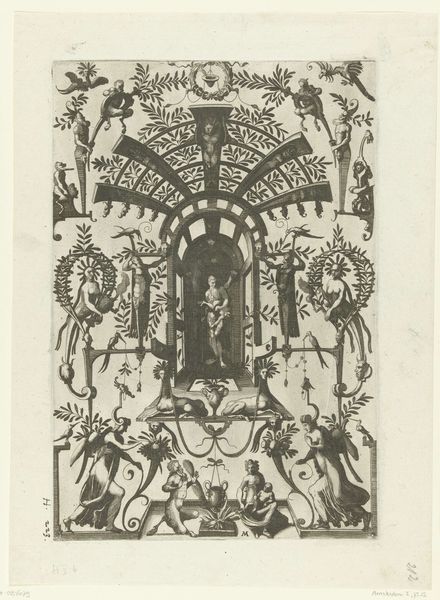
Pendant Design with Cimon and Pero, from Des Pendants de Cleffs pour les Femmes 1580 - 1600
0:00
0:00
drawing, print, engraving
#
drawing
# print
#
11_renaissance
#
engraving
Dimensions: Sheet: 3 1/2 × 1 3/8 in. (8.9 × 3.5 cm)
Copyright: Public Domain
Curator: Here we have an engraving, probably intended as a jewelry design, created sometime between 1580 and 1600. It's attributed to Johann Theodor de Bry. The museum calls it "Pendant Design with Cimon and Pero, from Des Pendants de Cleffs pour les Femmes." Editor: It’s a striking design; my initial feeling is somber and ornate. There's something deeply melancholic about the figures depicted, especially with the intense detail contrasting so vividly with the stark white background. Curator: Right, De Bry worked in a tradition where prints often circulated designs, influencing everything from metalwork to fashion. So it’s about more than just the image itself. The depiction of Cimon and Pero is actually an example of Roman Charity. Pero secretly breastfeeds her imprisoned, starving father, Cimon, defying authorities to keep him alive. Editor: Exactly. Understanding the iconography unveils so much. It’s a powerful challenge to the patriarchal norms of the time—a woman actively subverting authority for the sake of familial love and defiance against unjust laws. It's a quiet act of resistance embedded in a decorative design. Curator: Although presented as "charity", it undeniably undermines the father's position, as a person in power, since in a patriarchal context a father must take care of the family. This visual representation serves a crucial function in society by giving importance to specific principles. The imagery speaks volumes about changing social mores in early modern Europe, subtly championing female agency. Editor: Definitely. And notice how De Bry frames the figures within such elaborate ornamentation. It speaks to how even radical narratives were carefully presented to fit within existing aesthetic sensibilities, so, radical and yet acceptable for certain elite social circles. It tells us about who consumed this imagery. Curator: I agree. It provides insight into how artists, publishers, and craftspeople navigated censorship and cultural norms. Editor: Overall, looking at it through the lens of gender and power makes it so much more resonant than simply an object of ornate design. Curator: For sure, it reminds us that even something seemingly decorative can reflect complex cultural and social dynamics.
Comments
No comments
Be the first to comment and join the conversation on the ultimate creative platform.
